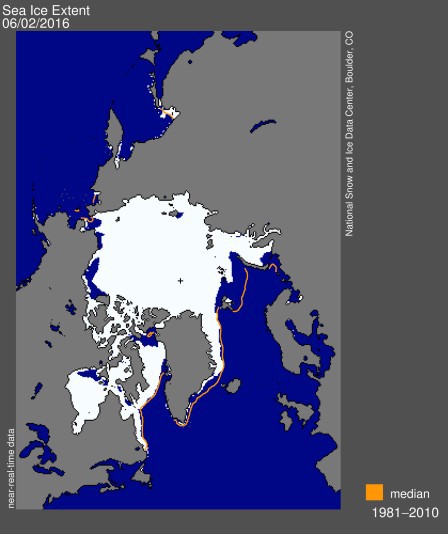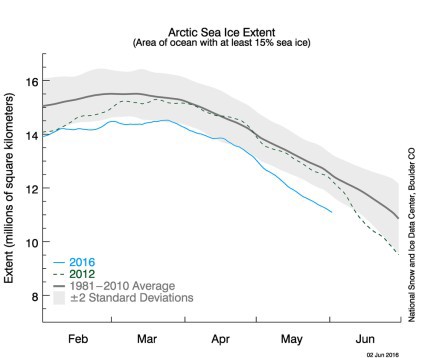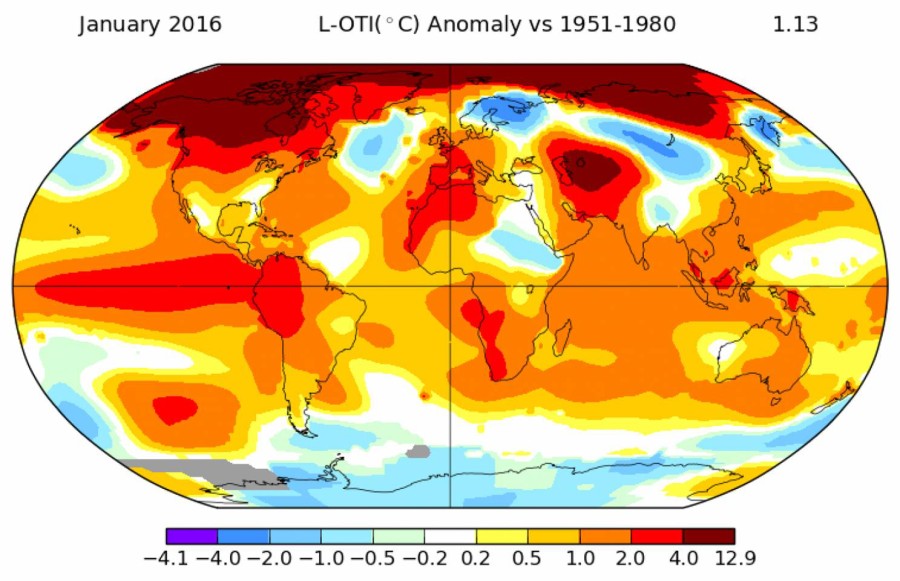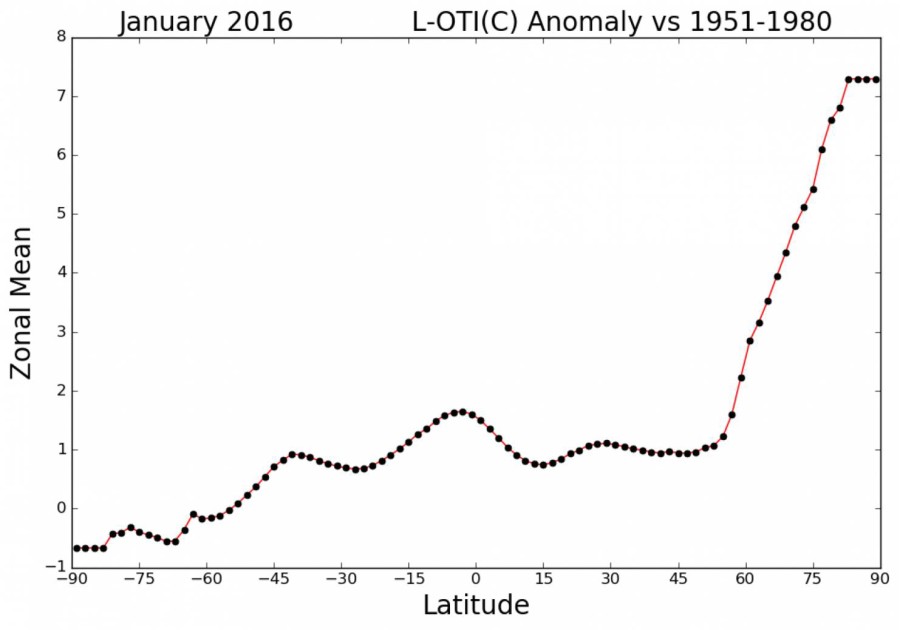weblog 2016 |
|
[home] [weblog] [science] [people] [station] [ny-ålesund] [sightings] [sitemap] [nederlands] |
|
Beyond sleep | 4 June 2016 |
| Today, it is quite cold outside. While temperatures in The Netherlands reach summer heights and local heavy rain have flooded the streets, we have 1 degree Celsius and strong winds making the windchill factor below freezing. Nevertheless, I wake up with an urge to tell you this story. A well-known story, but I am shocked again. Climate change is not for the future. Climate change is happening now. | |
 |  |
| The daily update of http://www.nsidc.org on arctic sea ice for 2 June 2016. The + in the middle is the north pole. South of it in grey, Greenland. To the right in the blue, you can see Spitsbergen with a little dot. There is still ice between the main island and Edgeøya. I am sitting there, on the westcoast of Spitsbergen 78 degrees north. Feeling a bit cold. The entire Barentsz Sea has no ice. Nova Zemlya is a border which keeps ice to the east. If it continues like that, we will have another record low in ice extent. And even if we miss that, it will be a record low in ice volume. | |
I am not an expert in climate change. I study ecosystems and food webs by monitoring birds. But I have been lucky to go to the Arctic already for 30 years. And in the Arctic warming is more obvious than anywhere in the world. Twentyfive years ago, we were sceptical that Spitsbergen would be the best place to document climate change. It started in Siberia and Spitsbergen temperatures were buffered by the ocean around it. The year 2006 was a warm season. That did change the environment here. New fish species occurred, but also the barnacle geese started their breeding season much earlier and have continued on the early schedule ever since. | |
 | |
| When giving presentation, I don't like to show models. Others now more than me about climate modelling. I just show data. Data which have been measured. And those data have kept me awake last night and urged me to write this story. Since January 2016 I have the following two graphs in my presentations. The first one shows a world map with the difference between the measured temperature and the average over the period 1951-1980. Look at the scale. Temperatures were from 4 to 12 degrees higher in January 2016. | |
 | |
 | |
| This graph from the same month, January 2016, is even more clear. On the x-axis, you see the earth from south pole (-90) to the equator (0) to the north pole (90). Follow the temperature line. Antarctica was a bit colder than normal.But most of the world experienced a temperature rise of 1 degree Celsius. The Netherlands is around 53 degrees latitude. Still one degree. And than it happens. The temperature differences rises steep to 7 degrees in the Arctic. We thouht we had a mild month of January with this one degree, but here in the Arctic it was 7 degrees warmer. It is all the same story. Ice disappearing, temperatures rising. The story which kept me awake was shown on the website on which I checked the weather for the coming days. For 66 months in a row (5 1/2 year), every month the temperature on Spitsbergen has been above normal (see http://www.yr.no in Norwegian. Than I look again to the graph above. What does this mean for a migratory bird migrating from my home town latitude to here. I have to go out. I have to measure. I have to document. Never sleep again. | |
[home] [weblog] [science] [people] [station] [ny-ålesund] [sightings] [sitemap] [nederlands]

|
|||||||
| [previous] | [present] | [next] | [overview] | ||||
 |
 |
 |
 |
||||
| 20160603, 11:30 | 20160604, 08:07 | 20160605, 14:17 | all items shown with small pics | ||||
| safety refresher course | Beyond sleep | steller's eider |
This page has been given the following keywords: [global warming] You can click on each keyword to get an overview about related pages. |